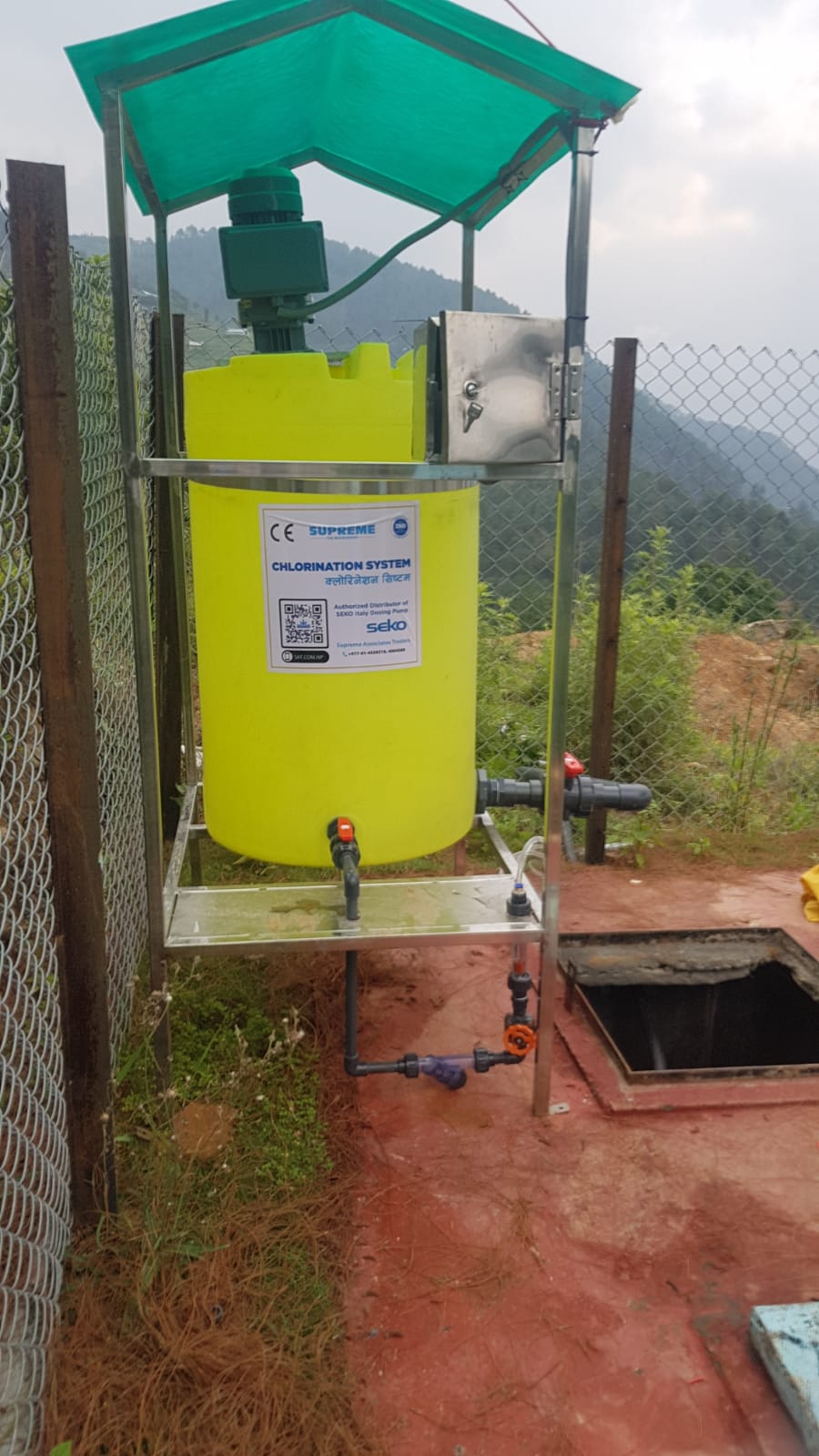How safe is your drinking water? Unlocking the Power of Chlorination for a Healthier Nepal.
Imagine taking a sip of water without second thought for health safety. For many in Nepal, this is still a
distant
dream. In Nepal, contaminated water still remains a major issue in many parts of Nepal, causing diseases and
outbreaks
in countless households. But there’s a simple, powerful solution: chlorination
Let’s dive into how chlorination can transform lives, tackle Nepal’s water challenges, and pave the way for a
healthier
future.
The Unseen Enemy: Why Chlorination Matters
Think of your drinking water as a battlefield. Harmful microorganisms like bacteria, viruses, and parasites
lurk
within,
ready to attack your gut. Chlorination acts as both a shield and sword—eliminating these pathogens while
keeping
your
water safe during its journey to your tap.
But what is chlorination? It’s the process of adding chlorine or chlorine-based compounds to water to
disinfect
it.
Beyond killing germs, it also improves water’s taste, odor, and clarity by removing organic impurities.
Why is chlorination so effective?
- Disease Prevention:Chlorination combats water borne diseases like cholera, typhoid, and
dysentery.
- Residual Protection:Unlike other methods, chlorine remains in the water, ensuring
safety
during storage and distribution.
- Affordable Solution:Chlorination is cost-effective compared to advanced technologies
like
UV filtration or reverse osmosis.
- Multi-functional Benefits:It not only disinfects but also oxidizes harmful chemicals
like
iron and manganese.
Nepal’s Water Woes: A Crisis in Every Drop
Nepal is blessed with abundant natural beauty but struggles with providing safe drinking water to its people.
Here are
the key challenges:
- Microbial Contamination:Many rural communities rely on untreated surface or groundwater
sources that are highly polluted with pathogens like E.
coli.
- Limited Infrastructure:While urban areas have piped water systems, rural regions often
lack
water treatment facilities, leaving millions
vulnerable to unsafe drinking water.
- Health Epidemics:Waterborne diseases are rampant in Nepal, especially during the monsoon
season when flooding contaminates sources
further.
- Geographical Barriers:Nepal’s rugged terrain makes it difficult to establish centralized
treatment systems in remote villages.
The result? Thousands of preventable deaths each year due to contaminated water—a tragedy that demands urgent
action.
How Chlorination Can Change Lives
Chlorination offers practical solutions that can be implemented across Nepal:
1. Community-Level Systems
Installing chlorination units in local piped water systems can significantly improve public health.
2. Portable Chlorinators for Remote Areas
In hard-to-reach regions, mobile chlorinators or tablet-based solutions can be a viable alternative. These
require
minimal maintenance and can be easily integrated into existing setups.
2. Portable Chlorinators for Remote Areas
In hard-to-reach regions, mobile chlorinators or tablet-based solutions can be a viable alternative. These
require
minimal maintenance and can be easily integrated into existing setups.
3. Household-Level Solutions
Where centralized systems are unavailable, individuals can treat their own drinking water using affordable
chlorine
tablets or liquid solutions.
A Story of Hope: A Case Study How Chlorination Ensured Safe Drinking Water for Simkot (2023 AD)
Simkot Rural Municipality, in collaboration with Supreme Associates Traders, recently tackled a critical
public
health
issue by installing chlorination dosing systems in its drinking water supply system. With financial support
from
UNICEF.
These systems were set up to address rising contamination in water sourced from the Humane Khola. Over 3,200
households
in Simkot Bazaar and Wards 5 and 6 now benefit from properly chlorinated water, significantly reducing the
risk
of
waterborne diseases. The initiative was taken due to alarming findings of parasitic worms caused by fecal
contamination
in the river basin last year. The new chlorination system ensures continuous disinfection, and local staff
have
been
trained to maintain the system for long-term sustainability.
This intervention highlights the transformative impact of collaboration between local authorities,
international
organizations, and technical experts. Vice Chairperson Sushila Rokaya emphasized that prioritizing health was
key to
this project’s success. By addressing resource constraints that had previously delayed action, the
municipality
has
ensured a steady supply of safe drinking water for its residents.
What Can You Do? Be Part of the Solution!
You don’t need to be an expert to make a difference:
- Advocate for chlorination systems in your community or workplace.
- Educate others about the importance of safe drinking water.
- Support organizations working on clean water initiatives in Nepal.
Together, we can ensure that every Nepali household has access to safe drinking water—one drop at a time.
Turn the Tide: Let’s Make Safe Water a Reality
Chlorination isn’t just about science—it’s about saving lives and giving families peace of mind. It’s
affordable,
effective, and adaptable to Nepal’s unique challenges. By embracing this solution at all levels—household,
community,
and national—we can unlock the potential for healthier communities across the country.
So, ask yourself: What if clean water is not just a dream but a reality for every Nepali family? Let’s work
together to
make it happen!

